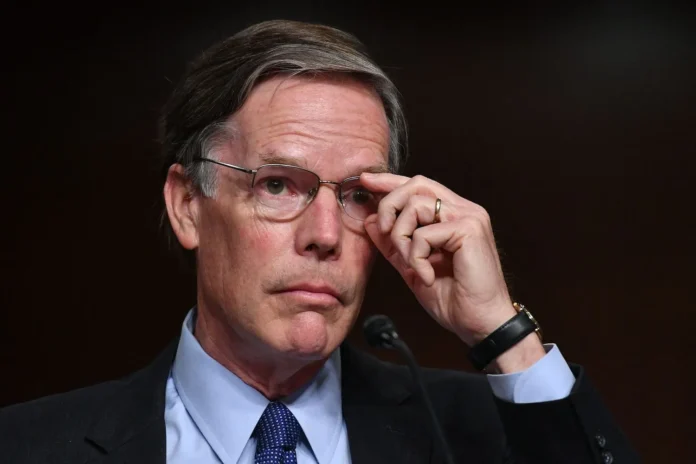U.S. Ambassador to China Nicholas Burns and Chinese Foreign Minister Qin Gang met on Monday—one of the first high-level U.S.-China dialogues since the intrusion of a Chinese spy balloon into U.S. airspace caused U.S. Secretary of State Antony Blinken to cancel a trip to Beijing. Had it gone ahead, Blinken’s trip would have followed a relatively warm meeting between U.S. President Joe Biden and Chinese President Xi Jinping on the sidelines of the annual G-20 summit in November.
This week’s Burns-Qin meeting was not a breakthrough. That was evident in Qin’s language, which cast blame on the United States for declining relations, echoed in a Foreign Ministry press conference following the event. Under ordinary circumstances, the meeting would have seemed unremarkable; it’s only because things between the two countries are so bad that an event that included Chinese accusations of “erroneous words and deeds” is seen as a potential step forward. Although it’s possible that the Blinken trip may be revived, I wouldn’t count on it anytime soon.
Because China so often delays or blocks meetings with the United States and other Western countries, any meeting is often taken by diplomats as a success in itself—with or without concrete results. Paradoxically, U.S.-China meetings in the Xi era often seem to negatively affect relations. On the Chinese side, the fear of being seen in public as soft toward foreigners means that officials come off as cold at best and aggressive at worst. In my personal experience, U.S. officials who have sat in meetings with Chinese Communist Party (CCP) officials over the last decade of Xi-ism have a particularly dim view of Beijing.
In the past, Track II diplomacy—which involves nongovernmental organizations—has proved more successful. The less formal nature of the meetings and individualized contacts have to some degree built useful contacts and cooperative efforts, especially between specialists in areas such as nuclear safety and biosafety. But Track II diplomacy was almost entirely shut down during the pandemic, and attempts to restart cooperation around those issues that began in 2022 have been stymied by the domestic atmosphere in China, and to a lesser extent by an increasingly suspicious attitude in the United States toward contact with Chinese institutions.
The United States has expressed a desire to establish so-called guardrails around the relationship to prevent mutual bitterness from spiraling into worse conflict. Yet no one in Beijing is picking up the U.S. outreach; in fact, there is active hostility toward establishing such restraints, which Beijing sees as another way for Washington to contain Chinese power. There are Chinese officials who would like to ensure an event such as a sea collision, a U.S. official visit to Taiwan, or a spy balloon doesn’t escalate into an armed clash, but they are an increasingly disempowered minority.
In addition to the meeting with Burns, Qin has been busy so far this month. China and Pakistan are cooperating on an attempt to reintegrate a Taliban-led Afghanistan back into the international order; at a recent meeting, Qin promised an extension of Belt and Road funding to the country. The foreign minister is also headed to Europe to try to undo some of the diplomatic damage of the last few years.
Meanwhile, Qin is also set to meet with Central Asian leaders, aiming to reinforce ties to those countries’ elites at a time when China seems like a better prospect than Russia. Beijing and Washington may be barely talking to each other, but they’re certainly talking to other countries about each other.
Foreign Policy




